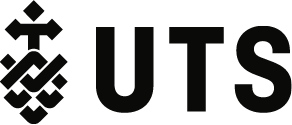This post is an excerpt from Franziska Trede’s paper GenAI is shaping the future of work: What does this mean for curriculum transformation and preparing students for the future world of work?. Click on the link to access a PDF of the full paper.
Work readiness is a multidimensional construct (Orr et al., 2023) that requires consistent and principled conceptualisation of professional practice pedagogy as well as alignment with assessment practices. Graduates need to be able to translate what they learn in the classroom to their career roles in situated workplaces. GenAI interfaces not only with learning, teaching and assessing but also with working. WIL is an ideal curriculum construct to prepare students to work with GenAI tools.
To become work-ready includes the following strategies and GenAI can be integrated into these:
- Preparing students to deal with misunderstandings and avoid adverse consequences (Hager & Holland, 2006). GenAI can be a dialogue partner, critical friend and mentor for students to help navigate challenging interpersonal situations.
- Preparing students for the transition from textbooks (best practice ideas out of context) to messy realities of workplaces with all their constraints and opportunities. GenAI can help identify good practices in particular workplace contexts.
- Creating safe environments on campus to try out practices, make mistakes and ask questions so they can develop skills that they can transfer to their chosen industry.
- Specifically, preparing graduates to work with GenAI requires critical, ethical, effective, professional and responsible attributes.
ACEN research into graduates’ self-perception of being prepared well for the world of work found that “work-based WIL experiences during undergraduate study continue to be associated with the highest rates of full-time graduate employment” (ACEN, 2023). This research supports the important role WIL plays in preparing students for a future world of work with GenAI.
There are many interdependencies in course curricula including external professional accreditation requirements, workplace expectations and academic learning outcomes. Working, teaching, learning and assessing with GenAI intersects many different priorities, interests and expectations. However, the common themes across them include efficiency, ethics, privacy and a regard for social wellbeing in the workplace.
Students need to be prepared to demonstrate GenAI capacity. This includes ethical, personal, organisational, policy, social and environmental awareness on the impacts of GenAI in diverse contexts. Appendix A (see link to paper in first paragraph) contains examples of GenAI guidelines and policies of some workplaces. Within their discipline, teaching staff can set activities for students to explore GenAI policies of their host destination as preparation before going on work-based WIL, e.g. internships.
Implications of what WIL students can bring to workplaces
The research discussed in the paper highlights that there is a wide range from no uptake to emergent practices with GenAI in workplaces. Australian companies are lagging in the introduction and integration of GenAI practices (Ai Group, 2023; Ai Group 2024). Particularly affected are small to medium enterprises. Well-prepared students with GenAI capabilities and critical understanding of the ethical and professional implications of the use of GenAI can benefit companies. WIL students can bring their knowledge and collaborative, inclusive practices of GenAI use to workplaces. This is an opportunity for students to lead the way into future practices that are underpinned by principles and knowledge of safety, privacy and wellbeing in the workplace.
Delegates from the 2024 CRADLE WIL Symposium have created a GenAI in WIL guide with resources for students, WIL practitioners at universities and external partners who supervise students in their workplace. The guide consists of a string of specific questions tailored to each WIL partner. At UTS we will customise this resource for more nuanced and sector specific contexts.
Guidance for preparing students to work with GenAI tools
GenAI is already part of the education conversation, and to bring it into the WIL context the following actions are recommended:
With colleagues and course team:
- Start a conversation with relevant colleagues GenAI use in the workplace
- Join WILN@UTS to stay up-to-date and contribute to the pan-university WIL good practice guides and exemplars
- Share the CRADLE GenAI in WIL resource
With external WIL partners:
- Share the CRADLE GenAI in WIL resource
- Discuss GenAI in industry advisory meetings. How are the workplaces of your external WIL partners changing due to GenAI? Should content and learning outcomes be made more relevant to GenAI transformations?
- Conduct a survey with all external WIL partners to capture current practices and suggestions for change.
- Connect with your accreditation body to stay up-to-date
- Conduct workshops about GenAI with all WIL stakeholders, including alumni, to identify opportunities and challenges
- Co-design an action plan for using GenAI in WIL and work-based WIL
With students:
- Workshop the CRADLE GenAI in WIL resource
- Engage in a conversation about UTS guidelines and policies relating to GenAI and specifically in the context of WIL
- Conduct a survey or workshop to capture student assumptions and understandings of opportunities and pitfalls learning and working with GenAI
- Integrate student feedback in developing GenAI guidelines for work-based WIL
- Embed reflections/assessment components of GenAI use in work-based WIL
